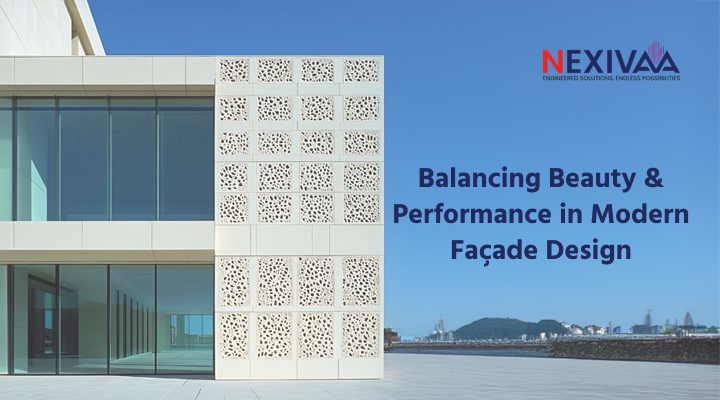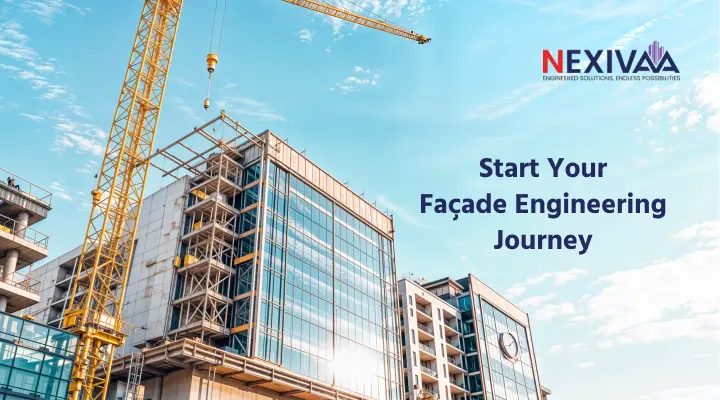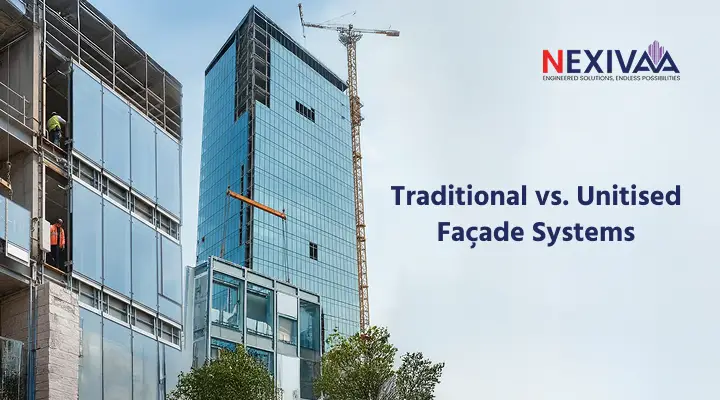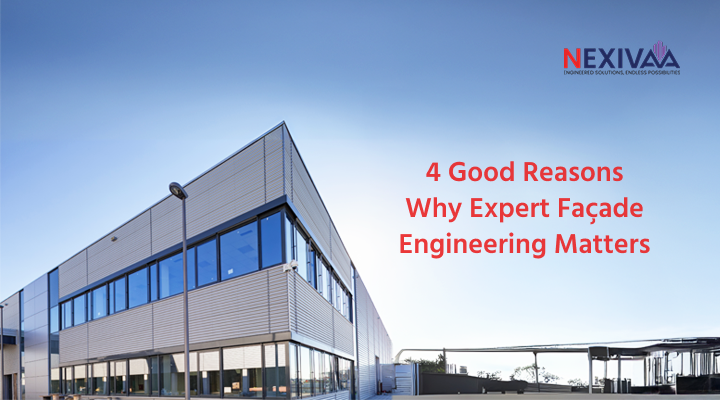In the realm of modern architecture, the façade of a commercial building is far more than its exterior shell. It’s the interface between the building and its environment and a reflection of brand identity, design innovation, and environmental responsibility. Striking the right balance between visual appeal and energy performance has become the cornerstone of modern commercial façade design, transforming how businesses approach both aesthetics and sustainability.
The Role of Façade Design in Modern Architecture
A building’s façade is its signature. It defines the structure’s character, enhances its visual prominence, and influences the way people experience it. In commercial architecture, façade design plays a crucial role in creating a strong first impression, attracting clients, and conveying a company’s values through its form and function.
With an increasing focus on green architecture, modern commercial façade design incorporates smart materials, energy-efficient glazing systems, and dynamic shading elements to reduce energy consumption while maintaining a striking visual appeal. Today’s façades are no longer static walls; they’re intelligent envelopes that respond to environmental conditions and human comfort needs.
Key Elements of Energy-Efficient Façade Design
Balancing aesthetics and performance begins with understanding how the façade interacts with light, heat, and airflow. The following principles drive energy-efficient office façade design and commercial envelope systems:
- Thermal Insulation: Advanced materials, such as high-performance glass, insulated panels, and ventilated façades, reduce heat transfer, maintaining consistent indoor temperatures and lowering HVAC loads.
- Solar Control: External shading devices, sun-breakers, and reflective coatings help manage solar gain while preserving natural daylight, lowering dependence on artificial lighting.
- Natural Ventilation: Façades designed with operable windows and louvered openings enable passive cooling and improved indoor air quality.
- Glazing Technology: Low-emissivity (Low-E) glass and double-glazed units strike a balance between transparency and thermal efficiency, making them ideal for small commercial building façade design, where space and cost optimization are key.
- Material Selection: Sustainable materials, such as aluminum composite panels (ACP), glass-reinforced concrete (GRC), and high-performance glass, contribute to both aesthetic flexibility and energy savings.
These innovations collectively enhance comfort, reduce operational costs, and create environmentally responsible commercial environments.
Design Strategies for Visual Appeal
While efficiency is key, façade design must also convey the building’s identity and that of its occupants. Aesthetic design involves creativity, proportion, and the art of visual storytelling.
For office façade design, glass curtain walls offer sleek modernity, while perforated metal screens and textured claddings add depth and dimension. Lighting design also plays a vital role; integrating LED lighting or backlit panels highlights architectural elements, giving buildings a distinct nighttime presence.
When it comes to small commercial building façade design, compact structures rely on the strategic use of materials, patterns, and proportions to maximize impact without incurring excessive costs. Designers often use a mix of materials, such as exposed brick, metal panels, and tinted glass, to bring character and contemporary flair to small-scale façades.
Technology’s Role in Façade Innovation
Technology has revolutionized how façades are conceptualized, analyzed, and executed. Building Information Modeling (BIM) allows architects and engineers to simulate energy performance and visualize façade behavior under real-world conditions. Parametric design tools enable customization at a granular level, ensuring every element contributes to performance and beauty.
Dynamic façades, equipped with sensors and responsive shading systems, are redefining modern commercial façade design. They adapt to sunlight and weather conditions, improving energy efficiency while enhancing occupant comfort. These smart façades represent the next phase in sustainable architectural design.
Sustainability: The Core of Modern Façade Thinking
Sustainability is no longer an optional design feature; it’s a necessity. Façade systems significantly contribute to a building’s energy profile, accounting for up to 40% of total energy use.
An eco-conscious façade design strategy includes:
- Use of recyclable and low-carbon materials
- Integration of photovoltaic panels for on-site energy generation
- Incorporation of rainwater collection systems and green walls
- Lifecycle analysis to evaluate long-term environmental impact
Incorporating these elements ensures that a building’s design supports both aesthetic ambition and ecological responsibility.
Challenges in Balancing Aesthetics and Efficiency
The challenge for architects and engineers lies in achieving synergy between creative design and performance metrics. Too much glass may enhance aesthetics but increase solar gain; excessive shading may reduce the quality of daylight.
The solution lies in early-stage collaboration between design consultants, façade engineers, and energy specialists. By aligning creative intent with technical feasibility, teams can deliver façades that are both visually inspiring and environmentally optimized.
The Future of Commercial Façade Design
The evolution of façade design is shifting toward adaptive, integrated systems that merge architecture, engineering, and sustainability. Future façades will be data-driven, equipped with embedded technologies that monitor temperature, air quality, and daylight intensity.
Biophilic elements, such as living walls, dynamic louvers, and breathable membranes, will continue to blur the boundaries between built form and the natural world. This evolution reflects a growing understanding: façades must serve people and the planet, not just architecture.
Why Choose Nexivaa for Façade and Fenestration Consultation
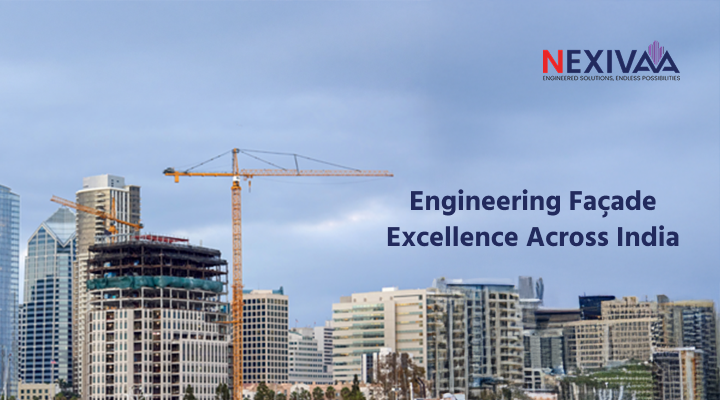
At Nexivaa, we don’t just design façades; we engineer performance. Our team brings together design innovation, structural expertise, and sustainability to create façades that perform as beautifully as they look.
Here’s what sets us apart:
- Comprehensive Expertise: From modern commercial façade design to office façade design and small commercial building façade design, we deliver solutions that combine functionality with visual impact.
- Integrated Approach: We blend architectural creativity with technical precision to ensure your façade aligns with both aesthetic and performance goals.
- End-to-End Support: Our services span every stage from system selection and thermal modeling to material optimization and compliance management.
- Industry Reach: As a leading façade and fenestration consultancy in India, we work across diverse sectors, including commercial, institutional, and industrial projects.
- Sustainability Focus: Every façade is designed for long-term durability, energy efficiency, and environmental responsibility.
Whether you’re building a new project or revamping an existing structure, Nexivaa is your trusted partner in realizing façades that define modern design, performance, and innovation.
Start your design journey with Nexivaa today and experience façade excellence engineered for the future.
FAQs
1. What is the importance of modern commercial façade design in today’s architecture?
Modern commercial façade design plays a crucial role in striking a balance between a building’s aesthetics and performance. It enhances visual appeal, supports brand identity, and improves energy efficiency through advanced materials, smart glazing systems, and shading technologies that optimize thermal comfort and reduce energy costs.
2. How does façade design improve a building’s energy efficiency?
Façade design directly influences how light, heat, and air interact with a structure. By integrating thermal insulation, solar control systems, and natural ventilation, façades reduce energy consumption and HVAC dependency, resulting in sustainable and cost-effective building operations.
3. What materials are most commonly used in small commercial building façade design?
Small commercial building façade designs often utilize materials such as aluminum composite panels (ACP), glass-reinforced concrete (GRC), perforated metal sheets, and low-emissivity (Low-E) glass. These materials offer aesthetic flexibility, structural stability, and long-term energy efficiency.
4. How does office façade design contribute to occupant comfort and productivity?
Office façade design enhances occupant comfort by improving natural daylight, maintaining optimal indoor temperature, and providing noise insulation. Smart façades also incorporate dynamic elements, such as adjustable shading and ventilation systems, that adapt to real-time environmental conditions.
5. Why should businesses choose Nexivaa for façade and fenestration consultation in India?
Nexivaa is a trusted façade and fenestration consultancy that combines creative architecture with technical precision. From concept design to material optimization and system performance evaluation, Nexivaa delivers solutions that are energy-efficient, durable, and visually refined — ensuring façades that define both innovation and excellence.
